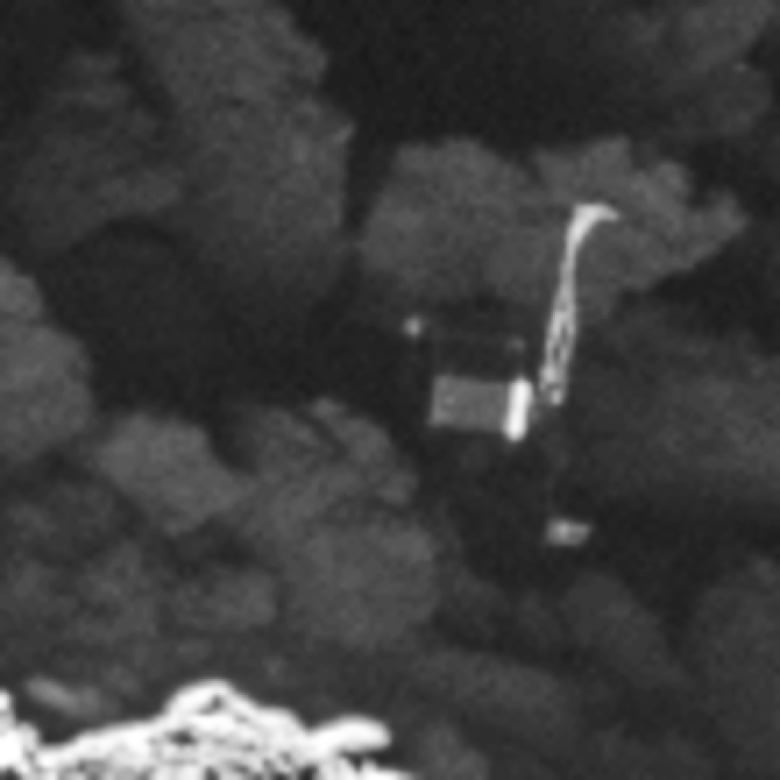Rosetta spacecraft finds lost Philae lander in dark crack on comet
'We were beginning to think that Philae would remain lost forever,' said the European Space Agency

The Philae lander, the firstspacecraft to land on a comet, has been spotted in a dark crackon the side of a comet.
The probe touched down on the comet in November 2014, but bounced twice, making it challenging for scientists to know its exact location, until now.
The European Space Agency's Rosetta spacecraft's OSIRIS camera captured an imageof the probe on the rocky surface of Comet 6P/Churyumov-Gerasimenkolast Friday.
- Good-bye, Philae. Comet lander's radio link cut off for good
- Why the Rosetta comet mission is important: Bob McDonald
"This remarkable discovery comes at the end of a long, painstaking search,"says Patrick Martin, the ESA'sRosetta Mission manager. "We were beginning to think that Philae would remain lost forever."
The camera took images of the probe which is one metre wide and one metre high, with a mass of100 kilograms from 2.7 kilometres away.

Philae sent data to Earth for three days before its battery ran out and it went into hibernation, only to recharge enough to communicate briefly with Rosetta in mid-2015.

But the team officially called it quits on Philae in July 2016, shutting off the communication link between Rosetta and Philae in an effort to conserve Rosetta's energy.
The team said knowing Philae's exact location means they can put the data it sent into context part of the lander's job was to analyze samples of the comet's surface. They also know why communication between Rosetta and Philae was a challenge the lander has been stuck in a cliff wall with itssolar-poweredbatteries in the shade.
Philae and the Rosetta spacecraft have been in space for more than 12 years. Their goal was to take photos of the comet and send data back to Earth in hopes of learning about how the planets, and possibly even life itself, evolved.
The ESA plans to crash-land Rosetta onto the comet on Sept. 30, because the craft is unlikely to survive lengthy hibernation in orbit as the comet heads away from the sun.
"Now that the lander search is finished we feel ready for Rosetta's landing, and look forward to capturing even closer images of Rosetta's touchdown site,"adds Holger Sierks, principal investigator of the OSIRIS camera.
Once Rosetta lands on the comet on Sept. 30, it, too, will be retired and all communications with Earth will stop.
with files from The Associated Press and Reuters












_(720p).jpg)


 OFFICIAL HD MUSIC VIDEO.jpg)
.jpg)



























































































